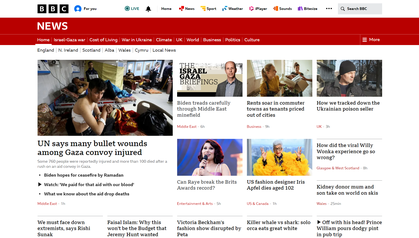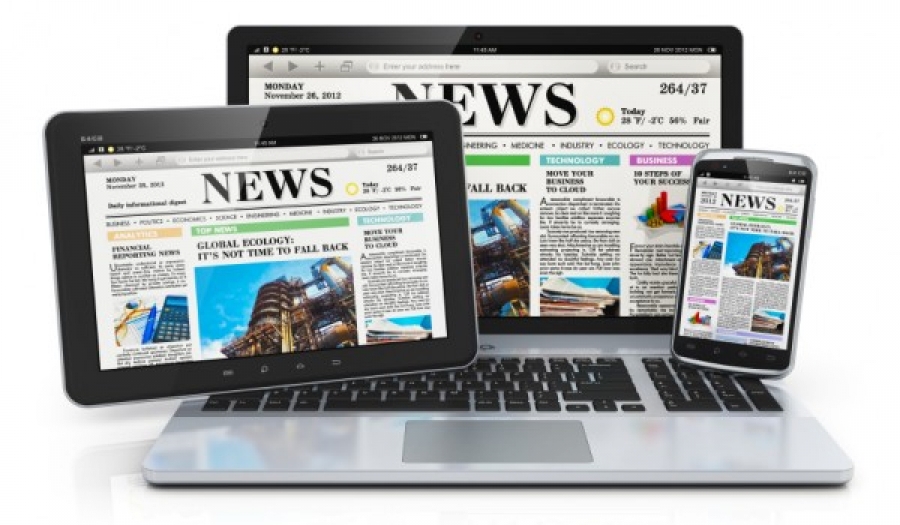The Buzz on Popular News
The Buzz on Popular News
Blog Article
Indicators on Popular News You Need To Know
Table of ContentsPopular News Things To Know Before You BuyOur Popular News DiariesRumored Buzz on Popular NewsOur Popular News Ideas
Age is also an aspect in the way individuals see the role of social networks. Younger social media sites news consumers are most likely to claim it has influenced their discovering right. Concerning fifty percent of social media information customers ages 18 to 29 (48%) state news on social media makes them much better educated, compared to 37% of those 30 to 49, 28% of those 50 to 64, and 27% of those 65 and older.
Research study on a state's brand-new tax obligation code most likely will not produce the exact same interest throughout state borders. Periodically experts can assist localize a larger nationwide tale that affects more than just a city or state.
If you are releasing newsworthy study, loophole in MarComm before the write-up being released to make sure that the pitch can emphasize the latest component of the story: the magazine of the study - Popular News. Occasions and statements that entail high-profile numbers are more probable to produce media insurance coverage. Gos to from national figures commonly need months of prep work because of awaited area interest
Examine This Report on Popular News
Stories frequently entail some sort of dispute. Necessarily, these tales are often questionable to some level. University personnel and faculty are typically viewed as unbiased professionals. We can help reduce possible reputational danger with these tales while additionally raising the odds of generating insurance coverage. While most of the above news values are interwoven, human rate of interest tales commonly stand apart.
Human rate of interest aspects can add news worth to various other stories that might seem lacking in the various other values. The uniqueness or oddity of a circumstance can assist affect whether or not an information outlet is most likely to cover a story. While this is not an exhaustive list, checking to see if your story or occasion has these qualities before calling us will certainly assist you figure out which components hold one of the most information worth.

There is likewise substantial proof that more customers might start to spend for information in the futureif authors can understand them and serve them well. Half of those that do not pay for information proactively seek out news and resemble subscribers in different ways. And nearly 2 in 10 of those that don't sign up for news currently suggest they are inclined to start to pay in the future.
The Only Guide for Popular News
We after that ask a set of inquiries to determine whether people spend for particular kinds of news sources. We asked people to call the resources they utilize most oftenwhether they pay for them or nothow they use them, the particular points they consider important regarding them, and some related questions regarding the price and worth of that resource.

More than 4 in 10 likewise mention the truth that family and friends register for the same product. More than a third of individuals state they originally subscribed in reaction to a price cut or promotion. In print, people likewise are moved heavily to register for get promo codes that conserve them money, something that has untapped implications in electronic.
Rumored Buzz on Popular News
Regarding fifty percent are "news hunters," indicating they proactively seek information as opposed to mainly bumping right into it in a much more passive method, though the news that nonpayers are seeking (for currently, at the very least) is commonly regarding nationwide politics. Like customers, a number of these individuals also obtain information numerous times a day, utilize the news in ways comparable to customers, and want comparable subjects, including foreign or international news.
We asked everyone who told us they have a routine free resource of news exactly how most likely they would certainly be to pay for it. Greater than a quarter (26 percent) say they would go to least rather most likely to begin paying for itand 10 percent are extremely or incredibly most likely. These most likely payers have a tendency to be news seekers, and they additionally often tend to be people that already pay for an information registration along with the source they comply with free of cost.
Of those who do pay, 54 percent sign up for newspapers in print or digitally, which represents 29 percent of Americans on the whole. The majority of them see this buy a print magazine together with their paper and pay for 2 to 4 information resources in total, some also a lot more. And while 53 percent are long-time subscribers (5+ years), even more than a quarter (27 percent) have purchased their newspaper registration within the previous year.
Couple of print subscribers believe it most likely they will certainly change to a digital-only subscription in the future, and over half of those that like digital have never paid for a print variation of the same resource (Popular News). Fully 75 percent of newspaper payers state they mainly reviewed the paper in print, while 21 percent are primarily electronic users, and 4 percent describe themselves as evenly split
Report this page